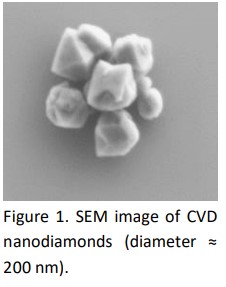Lieu : Gif-sur-Yvette
Référent : Fabien BRETENAKER
Mission
Développement et pilotage d’une plateforme de test de composants pour capteurs quantiques à base d’atomes de Rydberg pour applications à la métrologie des champs de radiofréquence.
Activités
- Piloter une plateforme de test de composants pour capteurs quantiques à base d’atomes de Rydberg (lasers, cellules atomiques, modulateurs, électroniques d’asservissement et de modulation/démodulation, etc…),
- Développer la plateforme de test Rydberg (lasers, électronique, cellules, modulateurs, circuits RF, etc.), – Gérer les collaborations externes afin de donner accès aux moyens de la plateforme à la communauté des capteurs quantiques à base d’atomes de Rydberg,
- Développer des sources lasers innovantes pour les capteurs quantiques,
- Développer des cellules atomiques fibrées, – Développer des circuits RF pour la métrologie,
- Simuler les distributions des champs RF dans les cellules,
- Simuler des réponses atomiques aux excitations optiques et RF,
- Au besoin, la personne interviendra sur d’autres opérations de recherche du laboratoire qui pourraient bénéficier de son expertise.
Compétences
- Physique quantique et interaction atomes-lasers,
- Technologie des lasers pour la métrologie,
- Composants de la photonique,
- Electronique numérique et analogique,
- Simulations de type éléments finis pour les champs électromagnétiques RF.
Compétences opérationnelles
- Conjuguer un ensemble d’éléments de différents domaines technologiques (optique, lasers, électronique, acquisition de données, radiofréquences),
- Piloter un projet dans un contexte national ou international et en partenariat avec des industriels,
- Utiliser les logiciels spécifiques au domaine (Python, Matlab, HFSS, bibliothèque ARC…),
- Participer à l’encadrement des jeunes chercheurs et chercheuses,
- Animer une réunion,
- Conduire une négociation avec un fournisseur,
- Appliquer les règles d’hygiène et de sécurité,
- Gérer un budget,
- Appliquer la réglementation des marchés publics,
- Assurer une veille scientifique et technologique,
- Gestion de projets,
- Anglais niveau B2.
Rejoindre LUMIN
Le laboratoire Lumière, Matière et Interfaces est une unité mixte du CNRS (UMR 9024), de l’ENS Paris-Saclay, de l’Université Paris-Saclay et de CentraleSupélec, située sur le plateau de Saclay (Orsay et Gif-sur-Yvette). Il comprend environ 30 chercheurs/chercheuses et enseignants-chercheurs/enseignantes-chercheuses permanents, une dizaine de personnels techniques et administratifs et environ 40 doctorants/doctorantes et chercheurs/chercheuses non permanents. Le laboratoire est spécialisé dans la photonique appliquée à différents domaines de la physique, des sciences de l’ingénieur, des matériaux, de la biologie et des technologies quantiques. L’ingénieur·e sera membre du service technique du laboratoire placé directement sous la responsabilité du directeur d’unité. Il/elle travaillera essentiellement sur la plateforme de développement de capteurs quantiques à base d’atomes de Rydberg située au bâtiment 505 de l’UFR des Sciences d’Orsay, en collaboration avec deux chercheurs permanents de LuMIn, des post-doctorants, des techniciens (mécanique, lasers, électronique), des ingénieurs et des doctorants de LuMIn ainsi que des laboratoires et industriels partenaires, français et étrangers, afin de mettre les moyens de la plateforme à disposition de la communauté et de participer aux développements technologiques des capteurs quantiques de champs de radiofréquence.


